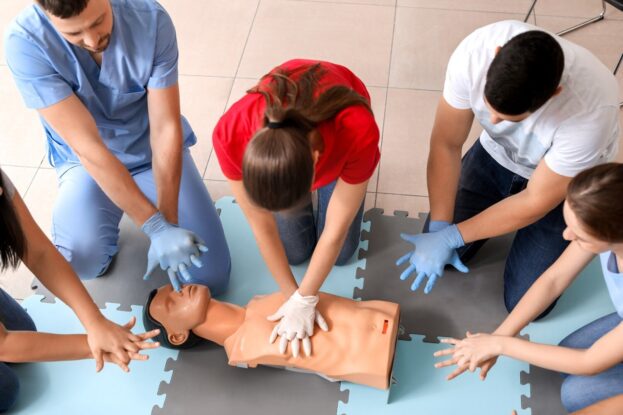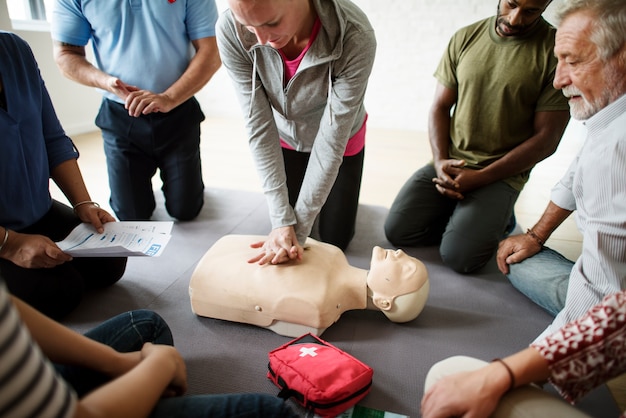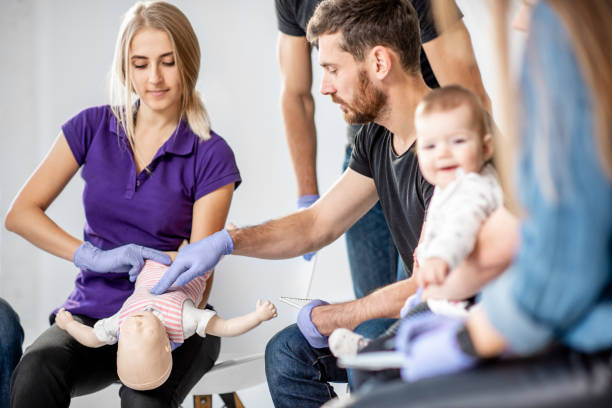
CANADIAN RED CROSS TRAINING PARTNER
LEARN CPR
AND
SAVE A LIFE!
All Courses are Red Cross Certified and WSIB Approved

CPR level HCP for Healthcare workers. Red Cross certificate.
View Details
WSIB Approved Emergency First Aid & CPR Course 8 hours training. Level C or BLS
View Details
WSIB Approved First Aid & CPR Courses for various jobs, school or home. Red Cross Certificates. Level C or BLS
View Details
Red Cross certified marine Basic courses available to book at nearest location.
View DetailsNot Sure which Course To Book?
Our team is Ready to help you anytime. Just give us a Call or Email Us!
Call us for a Quote. We're here 24/7.
Contact usFirst aid is the immediate care one gives to an ill or injured person until medical care can be obtained. The First Aider’s role includes: recognizing the emergency calling EMS/911 reacting according to your skills, knowledge, and comfort level In a standard or emergency first aid class, students learn skills and knowledge to handle emergencies such as: bleeding heart attack and stroke anaphylaxis head, neck and spinal injuries diabetic treatment Having certification in first aid helps you prepare for these emergencies, and provide assistance and care until an advanced medical team arrives.
CPR stands for cardiopulmonary resuscitation. The term cardio refers to the heart, and pulmonary refers to the lungs. CPR is the same as Basic Cardiac Life Support (BCLS). CPR is a combination of breathing and chest compressions. Performing CPR increases a cardiac arrest casualty’s chances of survival by keeping the brain supplied with oxygen until the person receives advanced medical care. CPR alone is not enough to help someone survive cardiac arrest. Advanced medical care is needed immediately, and includes the use of medications or a defibrillator. With proper CPR training, whether standalone or combined with a standard or emergency first aid course, can help make a difference in an emergency until help arrives.
AED stands for Automated External Defibrillator. An AED sends an electric shock through the chest to the heart to start the heard beating effectively again. Defibrillation given as soon as possible is the key to helping some people survive cardiac arrest. All of our first aid & CPR classes include AED certification, and teach you skills to handle situations such as: choking situations respiratory distress respiratory arrest (when breathing stops) cardiac arrest
CPR Level A is CPR and choking techniques for adults. This course is recommended for those who need to know how to assist with respiratory or cardiac emergencies affecting a person older than eight years of age. The course is intended for layperson (general public) first aiders, workplace first aiders, Can-Fit-Pro certifications, and others. CPR Level C is CPR and choking techniques for adults, children, and infants. 2-person CPR for adult and child is also taught at this level. This is recommended for those who need to know how to assist with respiratory or cardiac emergencies affecting persons in different age groups. The course is intended for layperson rescuers, workplace safety teams, lifeguards, police, ECE and daycare providers, PSWs, security guards, and other groups. CPR Level HCP is CPR and choking techniques for adult, child, and baby victims at a Health Care Provider level. This course includes Level C plus additional skills such as advanced circulation check, rescue breathing, and use of a bag valve mask (BVM). The course is intended for doctors, nurses, paramedics and allied Health Care Professionals (RT, OT, PT, etc). You can also take CPR Level HCP combined with a standard or emergency first aid course.
You will receive your Red Cross certificate upon successful completion of the course, right at the end of your class. All of our first aid and CPR courses include certification from the Canadian Red Cross Society or The certificates meet Canadian Occupational Safety and Health regulations, Ontario’s Workplace Safety and Insurance Board requirements, and are recognized by employers, schools, and safety councils throughout Canada.
As a Red Cross Training Partner, we are able to offer re-certification courses for Red Cross CPR C/AED and Standard First Aid with CPR C/AED or BLS ***Emergency First Aid is not eligible for re-certification in Ontario due to WSIB Regulations.**
In order to qualify for a re-certification course, you must meet the following criteria:
Blended learning is a combination of online training with face-to-face instruction. Online access will be delivered by email with a link to the course content from the Red Cross. The link will be sent 1-2 business days after your registration. Please note you need to complete online portion of the training must be completed prior to your in-class date. Your in-class session will be 1 day only. Duration will depend on which course you select.
In keeping with the safety protocols set out within Ontario, First Aid Guide Training Inc. has been deemed an Essential Service and will continue to operate. Training sessions are continuing to operate in-person and blended at all our locations. Preventive measures: